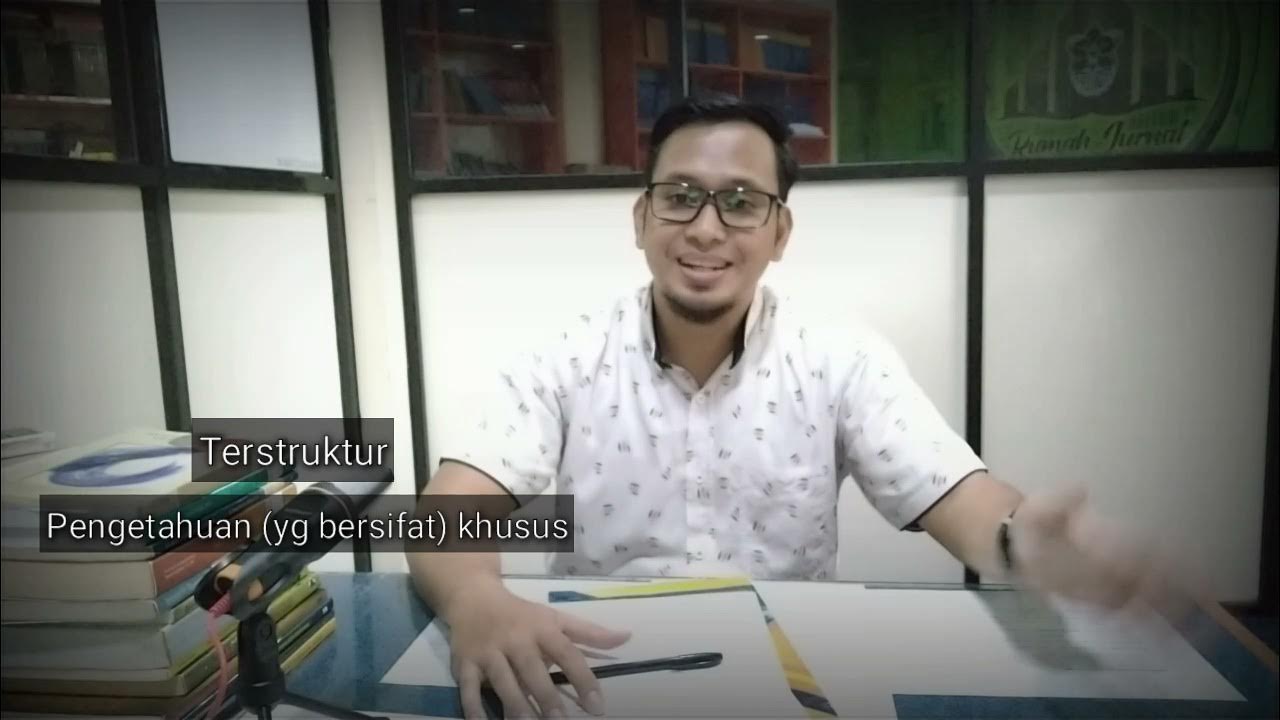Fundamentals of Logic - Part 1 (Statements and Symbols)
Summary
TLDRThis video script delves into the fundamentals of logic, a critical science of correct thinking that has been studied for millennia, starting with Aristotle. It explains the concept of statements and their truth values, distinguishing between declarative sentences and non-statements like questions or commands. The script also introduces symbolic logic for precise argument analysis and touches on paradoxes and fuzzy logic. It further breaks down compound statements, using logical connectives like 'and', 'or', and 'if-then', and concludes with a discussion on logical symbols for formal representation, emphasizing the importance of binary truth values in logic and computer language.
Takeaways
- 📚 Logic is the science of thinking correctly and has been studied for over 2,000 years, with Aristotle being one of the first to study it seriously.
- 🔍 Symbolic logic allows for the breakdown of ordinary language to analyze meaning systematically, enhancing precision in arguments.
- 🗣️ Statements are the foundation of logic, being sentences that can be true or false, but not both.
- 🌰 Examples of statements include 'February has 30 days', '4 plus 2 equals 3', and 'Bill Clinton was US president', with truth values depending on context.
- ❌ Not all sentences are statements; questions and instructions cannot be classified as true or false, hence they lack a truth value.
- 🔄 Paradoxes, such as 'I am lying to you', are complex statements that cannot be given a truth value unambiguously.
- 🤖 Truth values are binary, similar to computer language's bits, existing in states of true or false, which are fundamental to meaning.
- 🌐 Fuzzy logic, a more recent concept, allows for degrees of truth, such as a statement being 30% true and 70% false.
- 🔗 Compound statements are made from simple statements combined with connectives like 'and', 'or', and 'but'.
- 🔑 Connectives are words or symbols that link simple statements to form compound statements, such as the conjunction (∧), disjunction (∨), and negation (¬).
- 🔄 The biconditional (↔) is a two-way relationship between statements, where an if/then clause goes in both directions.
Q & A
What is the fundamental concept of logic discussed in the video?
-The fundamental concept of logic discussed in the video is the science of thinking correctly, which has been studied for over 2,000 years and involves the systematic analysis of arguments and statements.
Who is credited with the serious study of logic?
-Aristotle is credited with the serious study of logic, although there were a few people looking at it before him.
What is symbolic logic and how does it help in understanding language?
-Symbolic logic is a system that allows us to break down ordinary language and examine its meaning in a systematic way, enabling us to be more precise about the arguments we make when discussing any subject.
What is a statement in the context of logic?
-In logic, a statement is a sentence that declares something and can be either true or false, but not both.
Why are questions and instructions not considered statements in logic?
-Questions and instructions are not considered statements in logic because they do not declare something that can be classified as true or false; they are neither true nor false.
Can you explain what a paradox is in the context of logic?
-A paradox in logic is a statement that cannot be given a truth value because it leads to a contradiction or a situation where it can be both true and false, such as the statement 'I am lying to you.'
What is the significance of truth values in logic?
-Truth values are significant in logic as they represent the binary states of true or false, which are the foundation of meaning and the only way for anything we say to have meaning.
What is the difference between Boolean logic and fuzzy logic?
-Boolean logic, also known as regular logic, states that a statement must be either true or false with no in-between. Fuzzy logic, on the other hand, allows for degrees of truth, where a statement can be partially true and partially false.
What is a compound statement in logic?
-A compound statement in logic is a statement made of more than one simple statement or a simple statement and some form of connective, such as 'and', 'or', 'but', etc.
What are the different types of connectives used in logic?
-The different types of connectives used in logic include conjunction (and/but), negation (not), disjunction (or), conditional (if-then), and biconditional (if and only if).
How are logical statements represented mathematically or symbolically?
-Logical statements are represented using symbols such as ∧ for conjunction, ¬ for negation, ∨ for inclusive disjunction, ⊕ for exclusive disjunction, → for conditional, and ↔ for biconditional.
Outlines

This section is available to paid users only. Please upgrade to access this part.
Upgrade NowMindmap

This section is available to paid users only. Please upgrade to access this part.
Upgrade NowKeywords

This section is available to paid users only. Please upgrade to access this part.
Upgrade NowHighlights

This section is available to paid users only. Please upgrade to access this part.
Upgrade NowTranscripts

This section is available to paid users only. Please upgrade to access this part.
Upgrade NowBrowse More Related Video

Construção do Conhecimento - Aula 2

LOGIKA | Logika dan Sesat Nalar || LOGIC | Logic and Fallacy of Reasoning

BELAJAR ILMU🔥LOGIKA🔥ARISTOTELES #logika #aristoteles #filsafat #DasarLogika

LOGIKA ; PENGERTIAN & PENJELASANNYA

Asal Usul LOGIKA

SIKAP DAN MENTAL YANG HARUS DIMILIKI ORANG KRITIS | Dr. Fahruddin Faiz | Ngaji Filsafat
5.0 / 5 (0 votes)